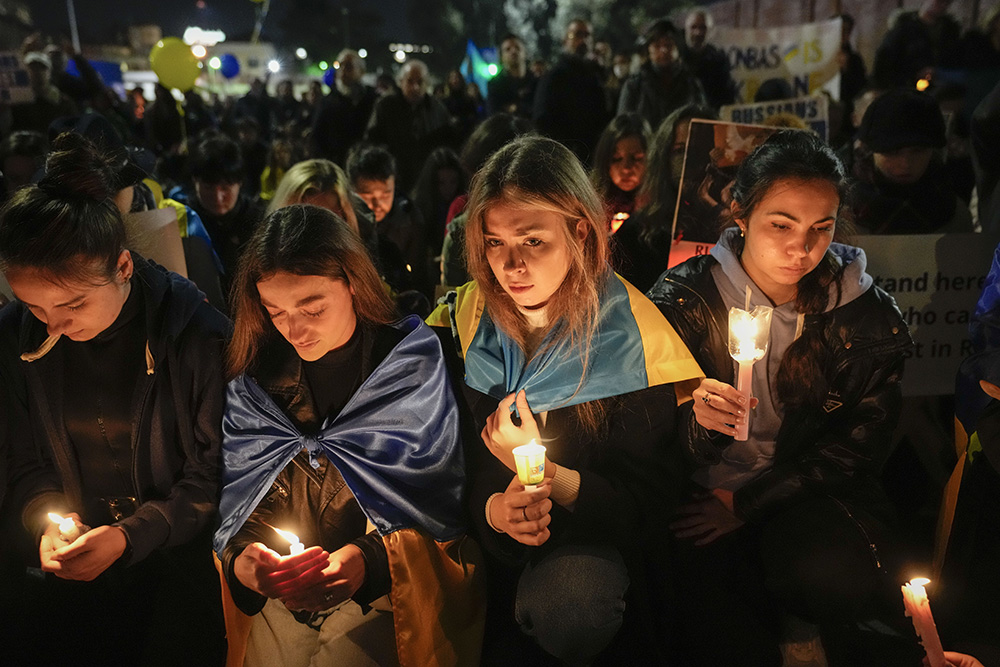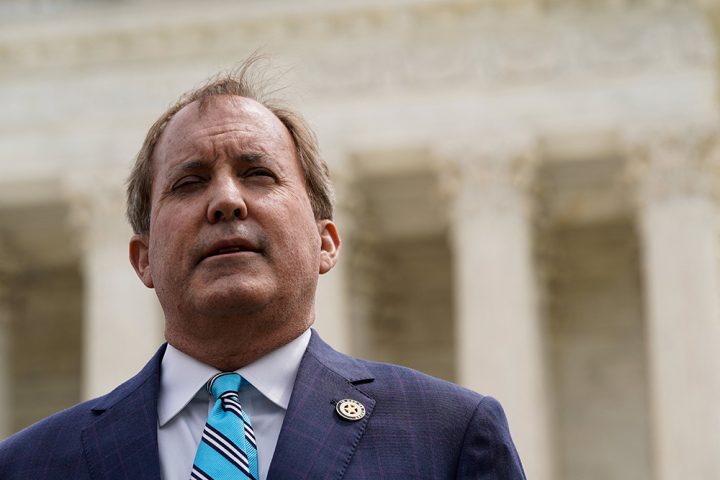
Along the via della Conciliazione, the long and commanding road that leads to St. Peter’s Square, are a number of embassies to the Holy See, all easily identifiable by their particular country flag.
On Feb. 24, the day of the one-year anniversary of Russia’s invasion of Ukraine, several embassies to the Vatican used their flagpole as a way of underscoring their support for what Pope Francis has often described as « martyred Ukraine. » Alongside their flag of their homeland, they also flew the blue and yellow Ukrainian colors.
But for some, the choice was especially punctuated, as their embassies are located next to Russia’s embassy to the Holy See — where the day after the invasion began last year, Francis took the extraordinary and unprecedented gesture of leaving the Vatican to make an unannounced visit to express his concerns about the war.
Ukraine’s Vatican ambassador Andrii Yurash highlighted the symbolic show of solidarity on Twitter by posting photos of the flags, especially that of Slovenia’s Holy See embassy located next to Russia’s embassy, and praising their show of « unity » with Ukraine.
« Great appreciation to [Slovenian] Amb. Jakob Stunf for displaying flag in direct closeness to the flag of country-terrorist, » he tweeted.
The post was then shared or « liked » on social media by other Vatican embassies and ambassadors.
If the revered diplomat Madeleine Albright, who served as U.S. secretary of state from 1997 to 2001, famously used her jewelry to convey diplomatic messages, especially that of hope or support, these days in Rome it’s taking place through flagpoles and social media.
During last week’s anniversary, Ukraine’s Vatican embassy did a full-court press to spotlight both Ukrainian suffering and resilience, all of which was amplified by a number of ambassadors to the Vatican attending the events and posting their support of Ukraine online.
The small Ukrainian team in Rome organized three public Masses at some of Rome’s most noted churches for a week of prayer for Ukraine, one of which was presided over by the Vatican’s foreign minister, Archbishop Paul Gallagher, and the other by the vicar of Rome, Cardinal Angelo De Donatis.
The Feb. 24 Mass at Rome’s Basilica of St. John Lateran, on the actual anniversary of the invasion, included a family photo of ambassadors posing next to both the Ukrainian and the European Union flag, in a nod to Ukraine’s aspirations to formally join the union.
In addition, the embassy hosted a group of Ukrainian parliamentarians who met with a number of senior Vatican officials and attended Francis’ Wednesday general audience in order to continue their push to get the pope to visit Ukraine and to also seek his support in the return of Ukrainian children they say have been abducted by Russia.
The anniversary events were capped Feb. 28 by a concert at the Palazzo della Cancelleria in Rome by Kharkiv’s National Academic Opera and Ballet Theatre, one of the oldest performing arts groups in Ukraine, in an effort to show that despite the war, Ukrainian culture continues to thrive.
When I visited Ukraine in December, along with a small delegation of journalists on a trip hosted by Poland’s and Ukraine’s respective Vatican embassies, one of the first locations we were taken to upon our arrival in Kyiv was an art display titled « Ukraine Crucifixion. »
The exhibit had opened on May 8, just over two months after the invasion began, to quickly memorialize the effects of the war.
« This is important to underline our belief in the victory and resurrection of Ukraine, » one of the curators told me at the time.
Beyond the powerful artifacts from the exhibit — which included a shrapnel-damaged painting of Jesus being taken off the cross and display cases containing damaged icons and crucifixes placed atop Russian bullets — the very fact that such an exhibit was assembled and opened, hosting families and school groups as soon as 10 weeks after war began, was itself a show of strength.
« We always notice what pins Secretary Albright wears, » Russian President Vladimir Putin once remarked to U.S. President Bill Clinton after one of her brooches angered him at a summit in Moscow.
And today, both in Kyiv and in Rome, Ukraine’s diplomatic team is showing subtle symbolism is still very much in vogue.



